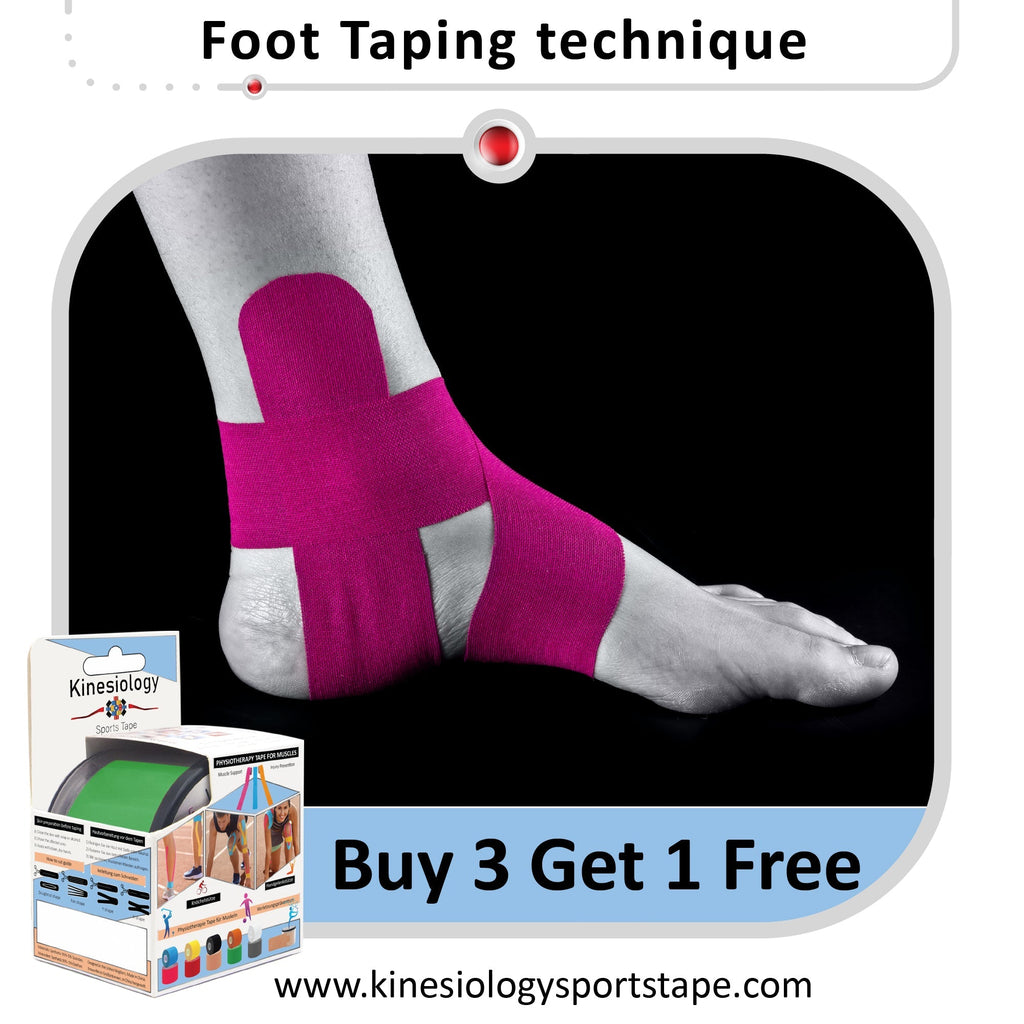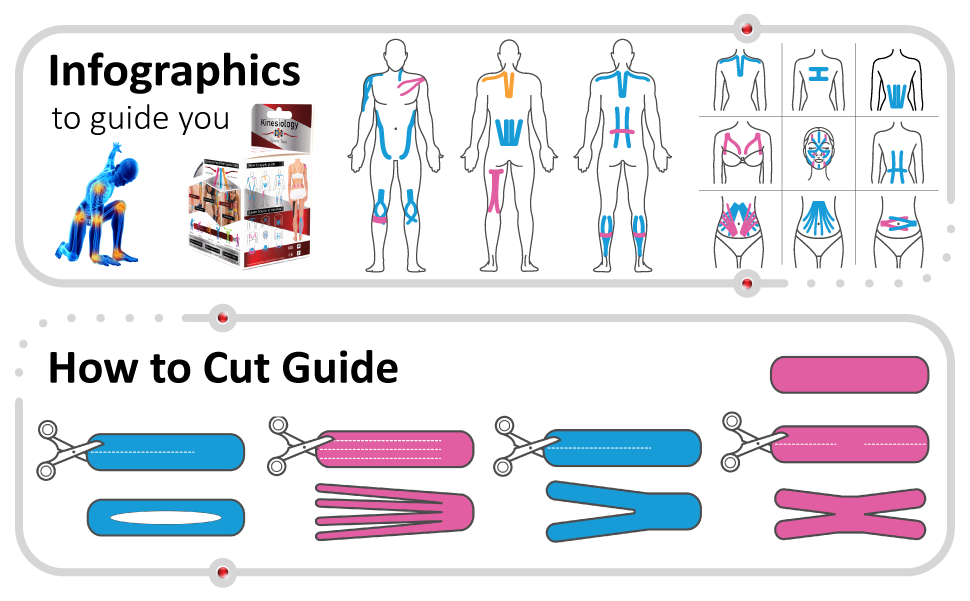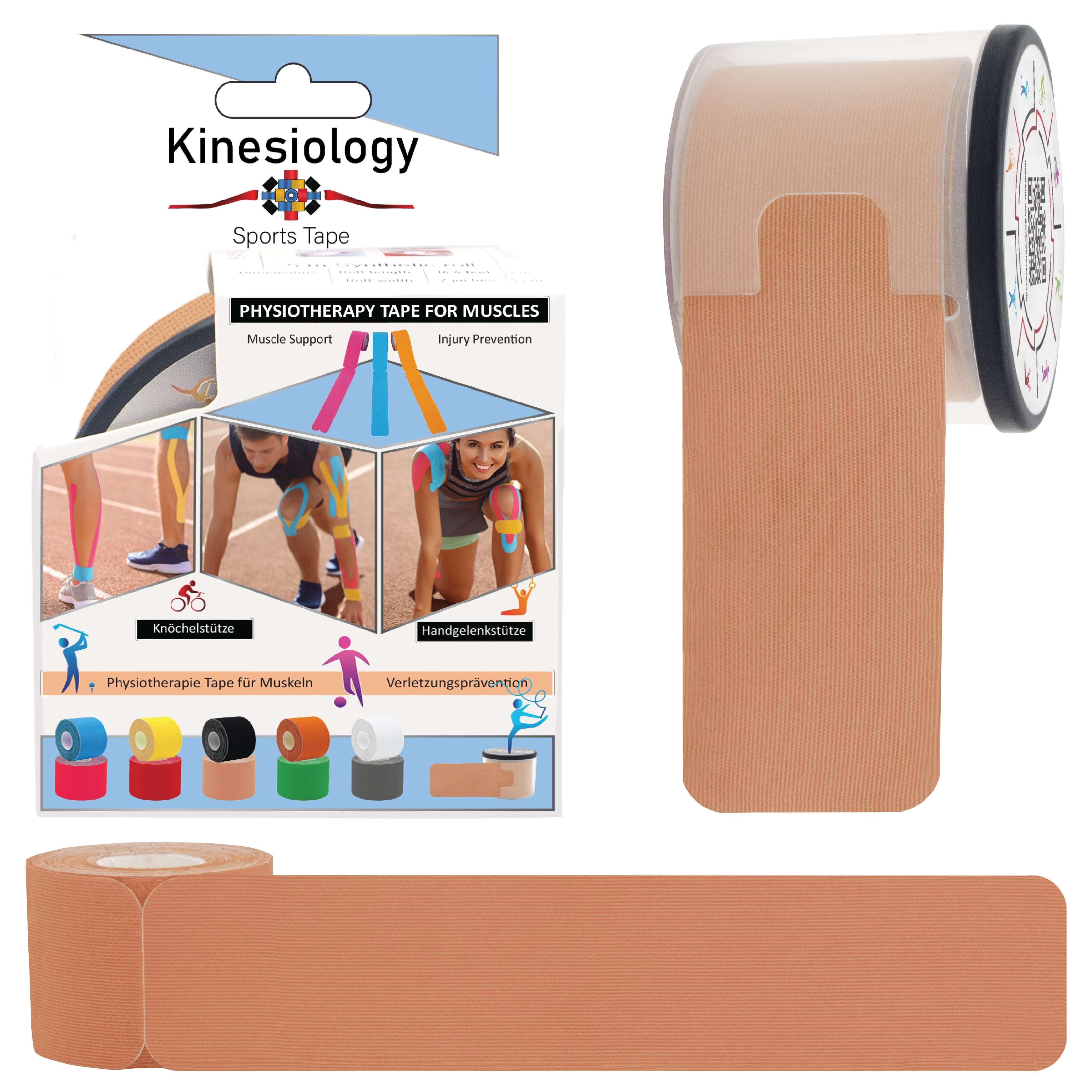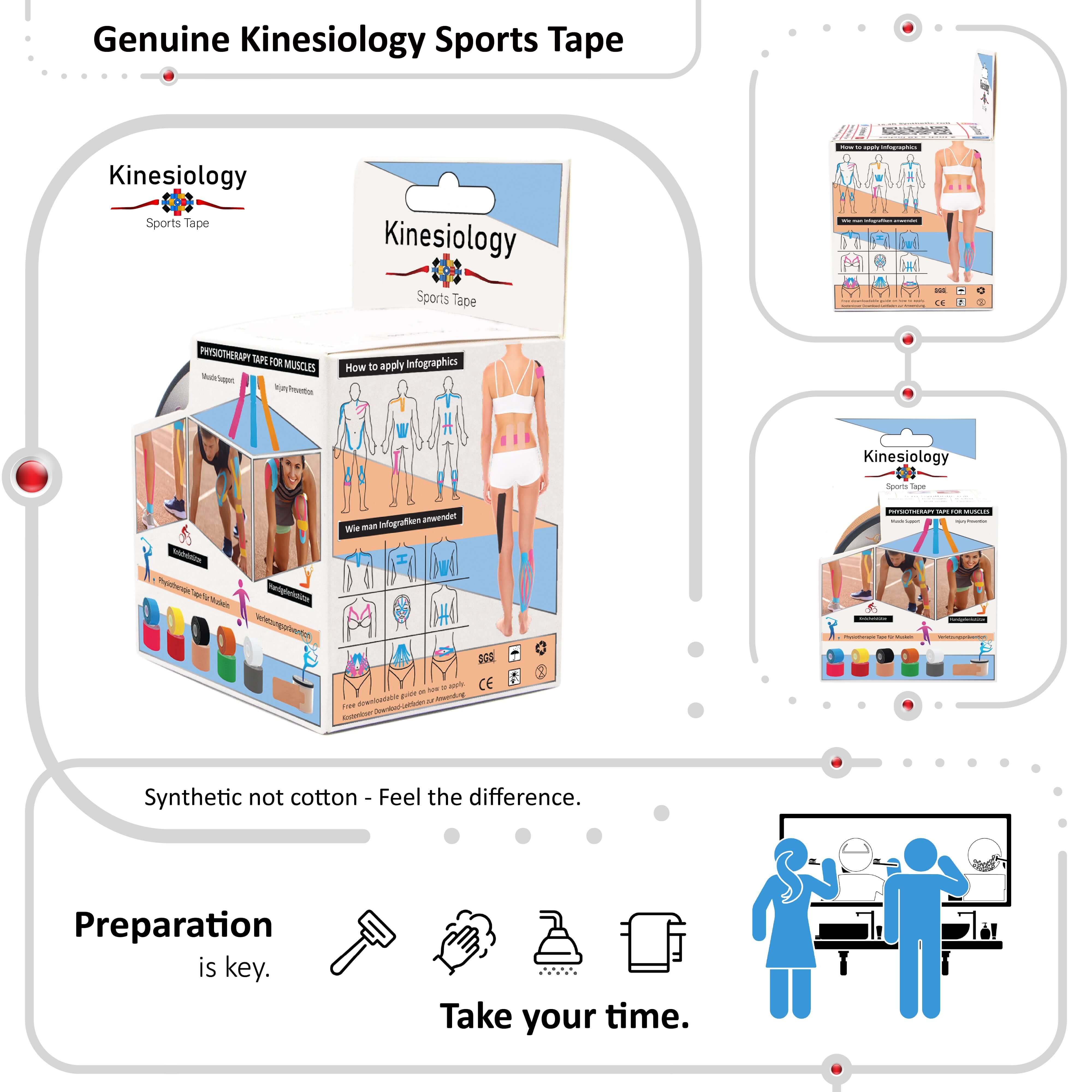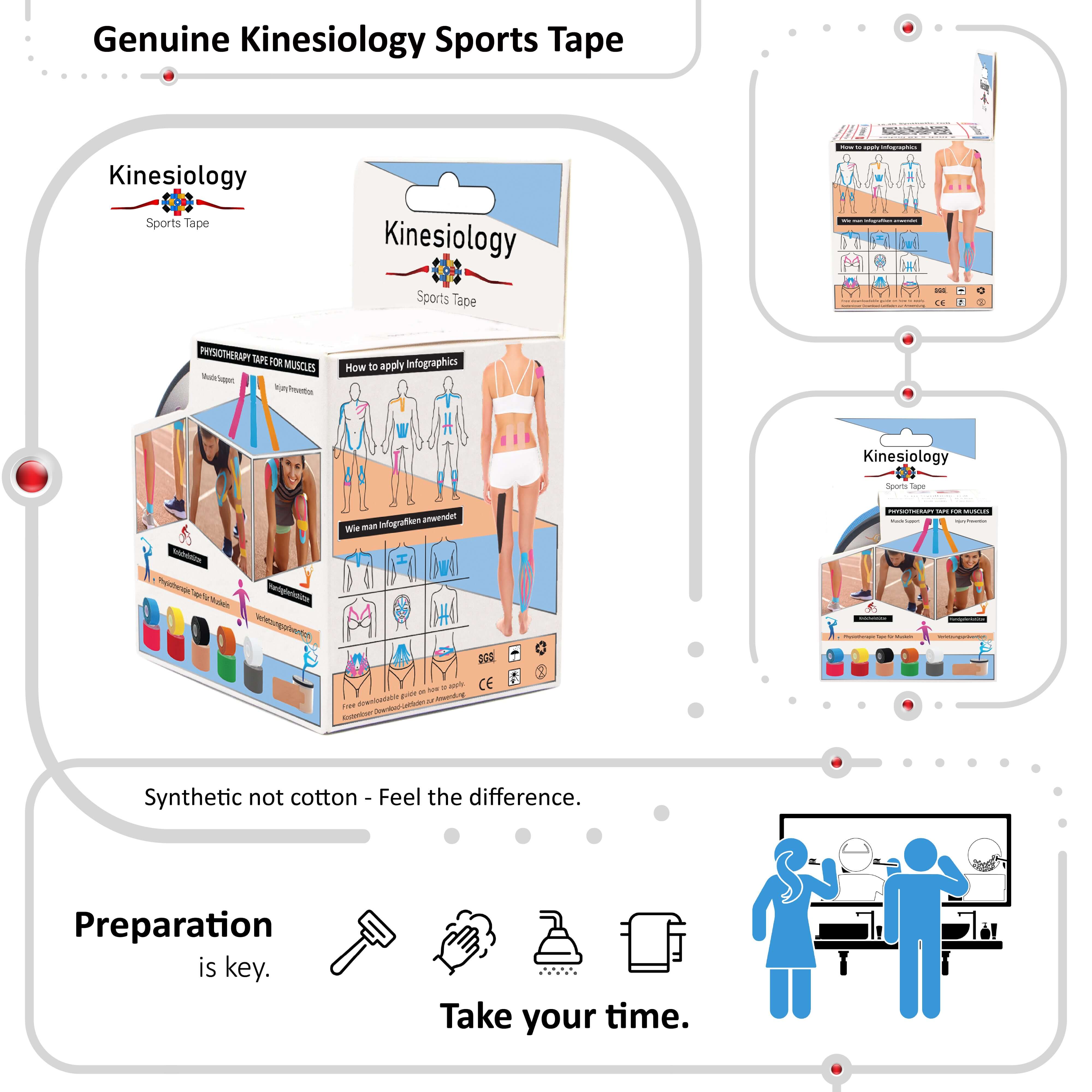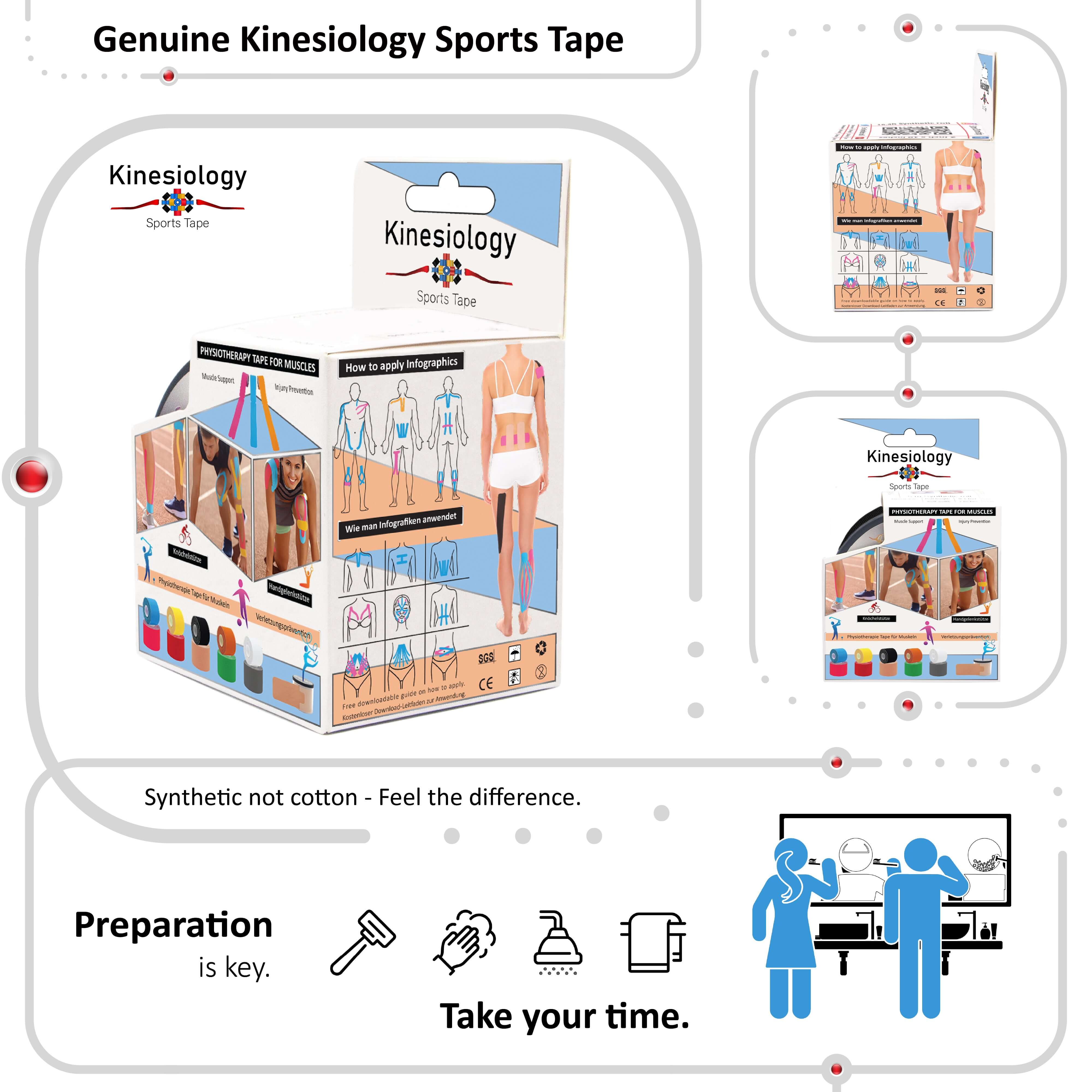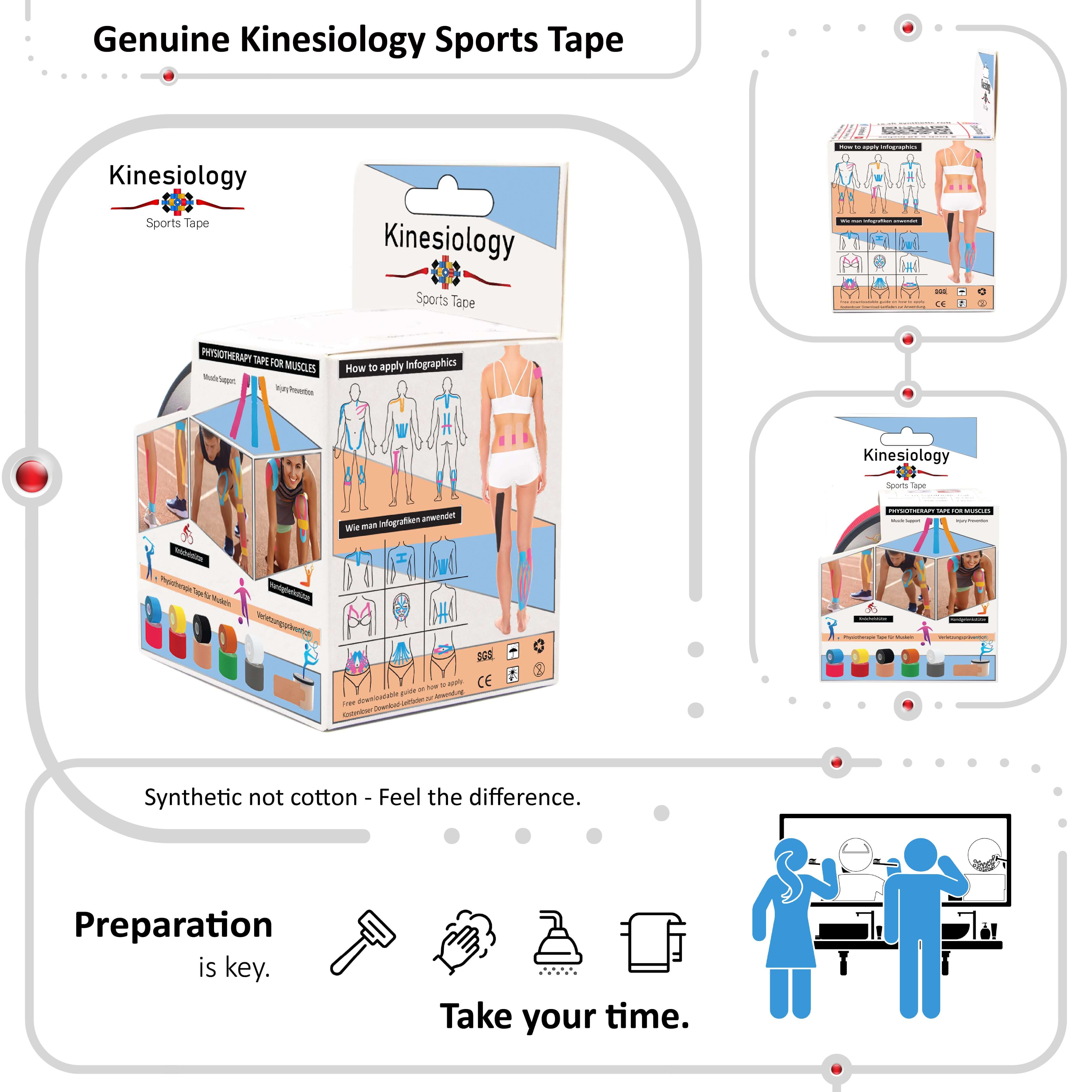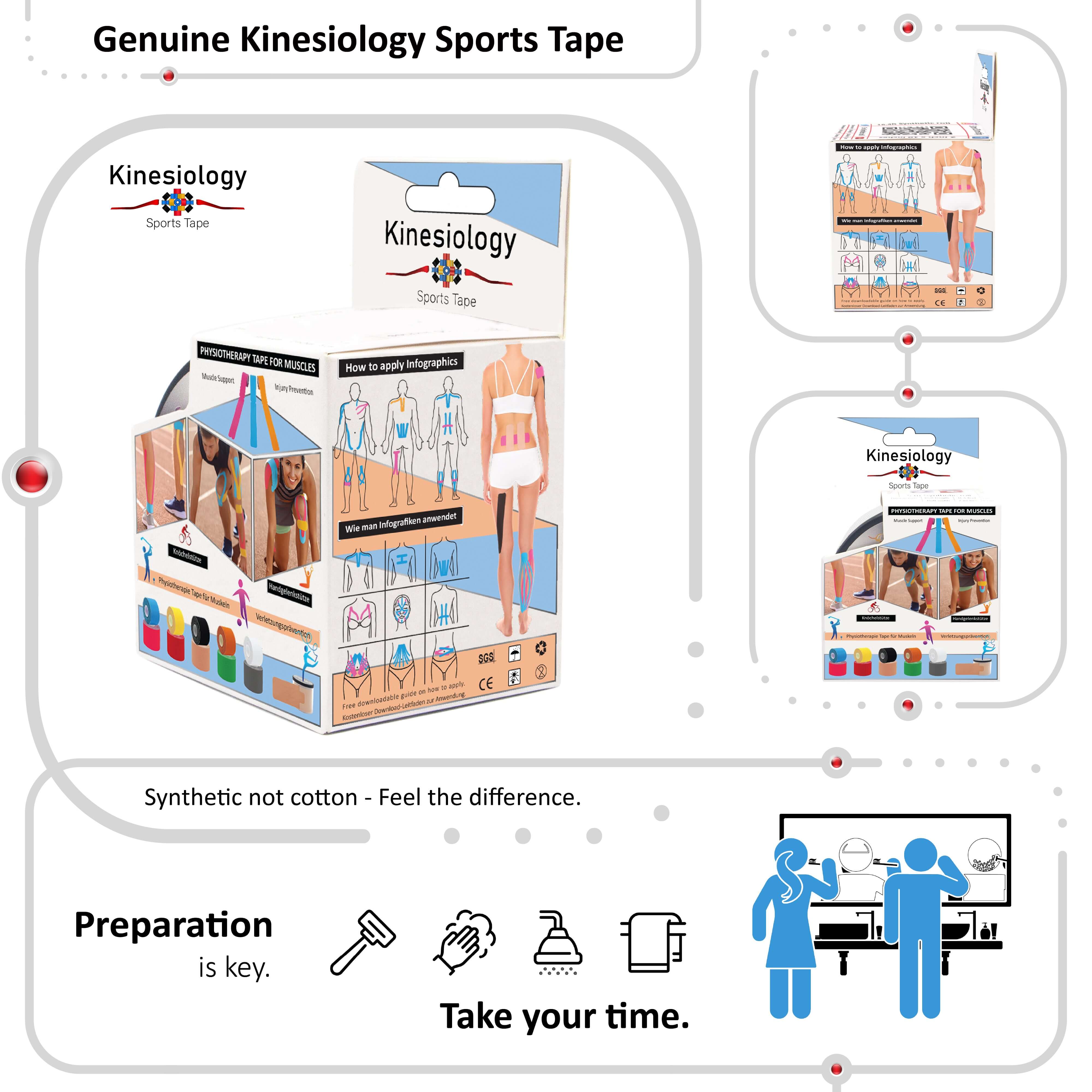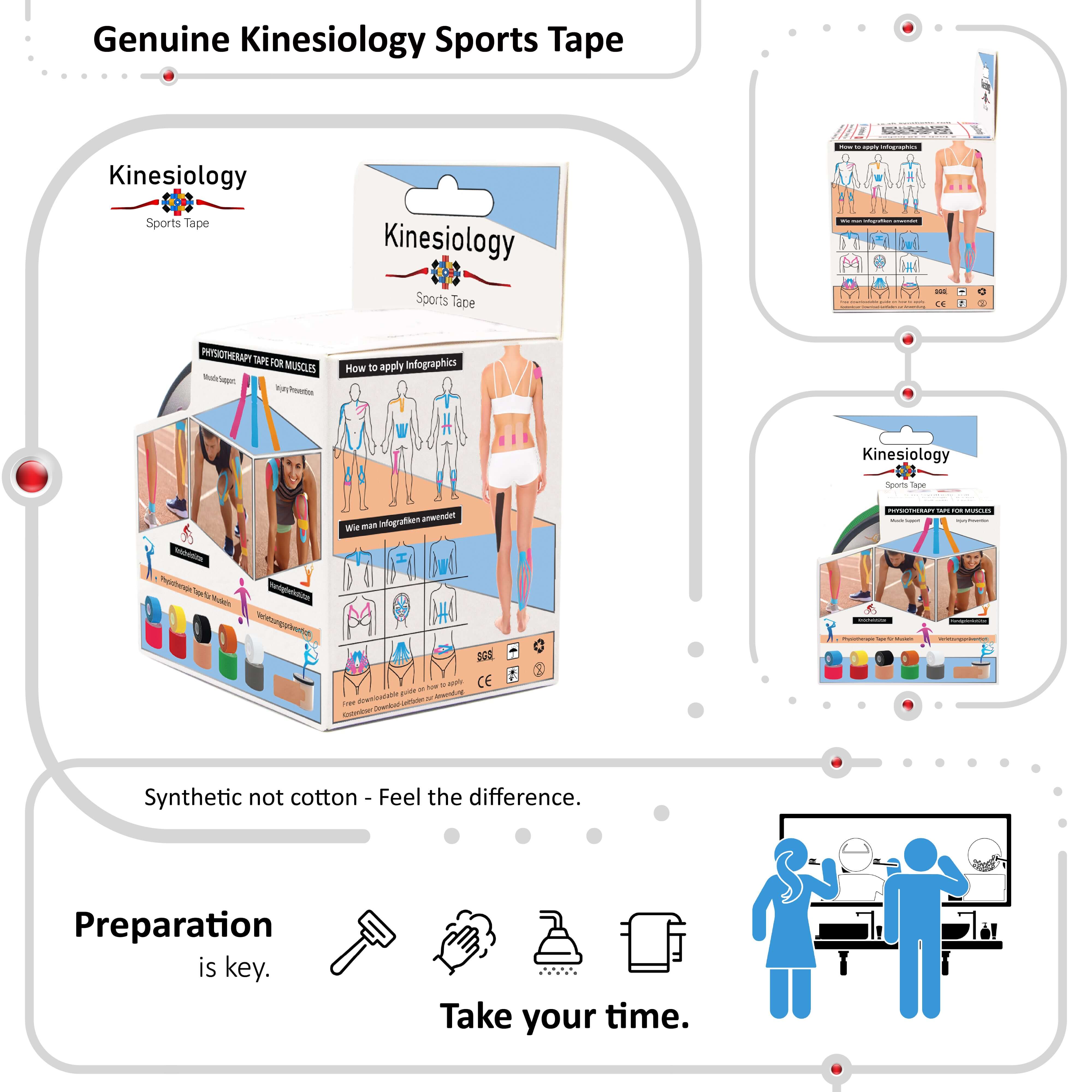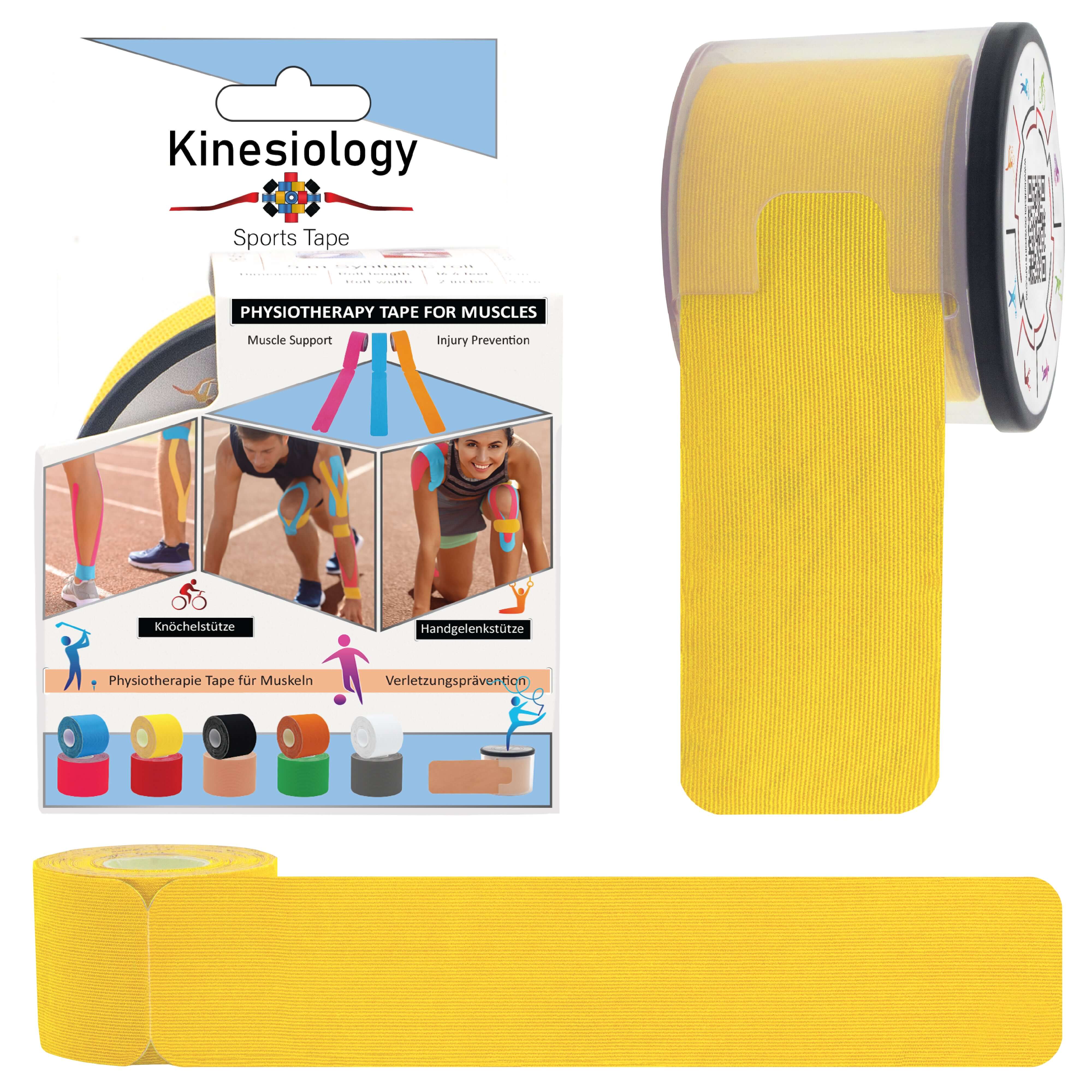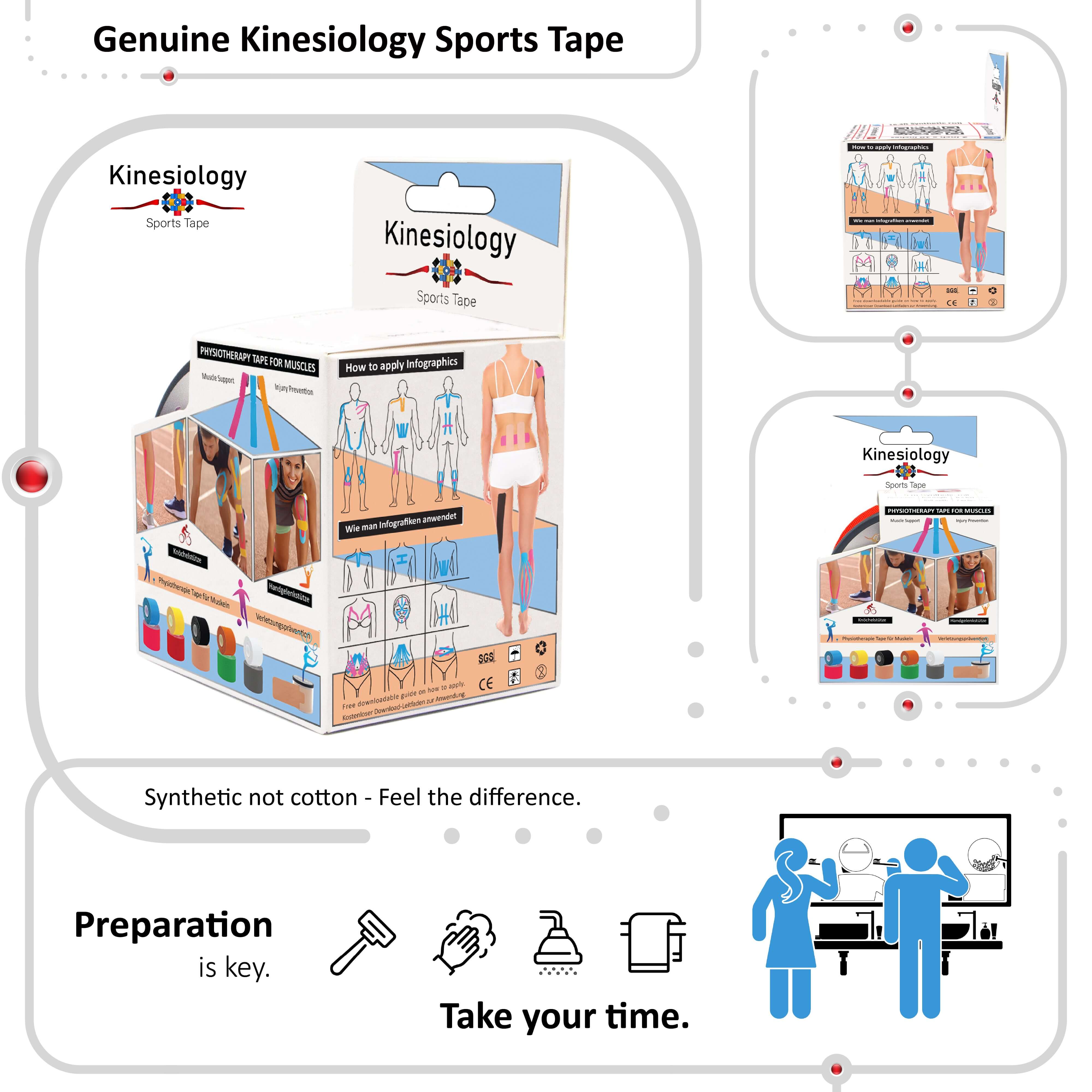
Kinesiology tape for pain relief

Chronic pain. It's a constant companion for many, limiting mobility, impacting quality of life, and often leading to a reliance on medication. But what if there was a drug-free option to manage pain? Kinesiology tape has emerged as a popular tool for pain relief, offering a vibrant and potentially effective solution. This blog dives deep into the world of kinesiology tape for pain relief, exploring its potential benefits and how it can be used to manage various pain conditions.
Understanding Kinesiology Tape:
Kinesiology tape is a thin, elastic adhesive tape designed to mimic the properties of human skin. It allows for a full range of motion while providing gentle support and potentially improving circulation. Kinesiology tape comes in various colors and designs, but the color itself doesn't affect its function.
The Science Behind Pain Relief:
The exact mechanisms by which kinesiology tape may provide pain relief are still being explored, but some potential benefits include:
- Improved circulation: Kinesiology tape may create microscopic lifting of the skin, potentially enhancing blood flow to the taped area. Increased circulation can deliver oxygen and nutrients to promote healing and reduce pain.
- Reduced inflammation: Kinesiology tape application may influence the lymphatic system, which helps remove waste products and fluid build-up. This reduction in inflammation can potentially alleviate pain and discomfort.
- Pain gate theory: Kinesiology tape can provide sensory input to the skin and underlying tissues. This stimulation may activate the body's natural pain-relieving mechanisms, effectively closing the "pain gate" and reducing pain perception.
- Improved proprioception: Kinesiology tape can enhance body awareness by stimulating sensory receptors in the skin and muscles. This improved proprioception may lead to better movement patterns, reducing stress on joints and potentially minimizing pain.
Kinesiology Tape for Various Pain Conditions:
Kinesiology tape can be a helpful tool for managing a variety of pain conditions, including:
- Muscle soreness: Kinesiology tape can provide support to overworked muscles, potentially reducing tension and discomfort.
- Joint pain: The tape may help stabilize joints, reduce inflammation, and improve proprioception, leading to less pain during movement.
- Headaches: Kinesiology tape applied to specific areas of the head and neck may help reduce tension headaches by improving circulation and reducing muscle tension.
- Arthritis pain: Kinesiology tape may offer some pain relief for people with arthritis by providing support and potentially reducing inflammation. (It's important to note that kinesiology tape is not a cure for arthritis and should be used in conjunction with other treatment modalities recommended by a healthcare professional.)
- Menstrual cramps: By potentially improving circulation and reducing inflammation, kinesiology tape may offer some relief from menstrual cramps.
Important Considerations:
- Kinesiology tape is not a magic bullet: While it may offer pain relief, it's not a substitute for proper medical diagnosis and treatment. Consult a healthcare professional for any pain you're experiencing.
- Application is key: Proper application techniques are crucial for maximizing the benefits of kinesiology tape. Consider consulting a physical therapist or athletic trainer to learn how to tape for your specific pain condition.
- Listen to your body: Kinesiology tape shouldn't cause discomfort. If you experience any pain or irritation, remove the tape and consult a healthcare professional.
Living a Life Less Limited by Pain:
Kinesiology tape offers a drug-free and potentially effective approach to managing pain. By understanding the science behind its pain-relieving properties and how to apply it correctly, you can explore whether kinesiology tape can become a valuable tool in your pain management toolbox.

